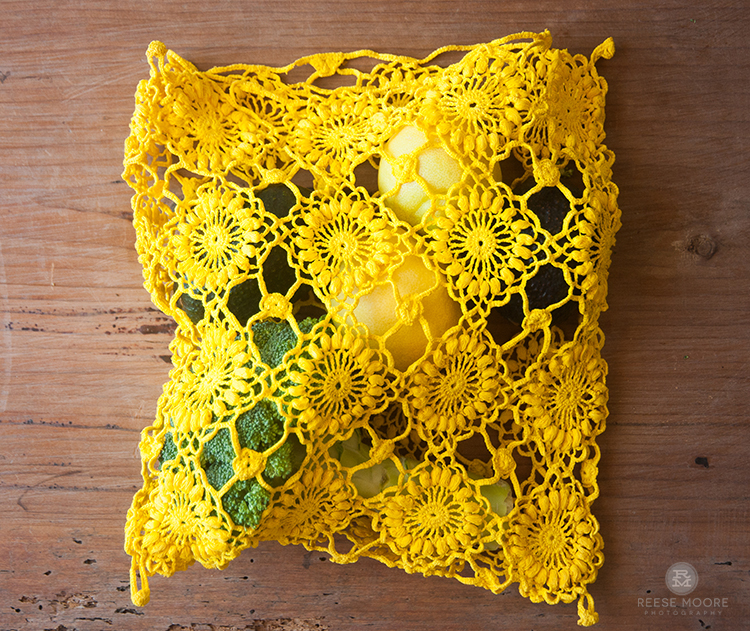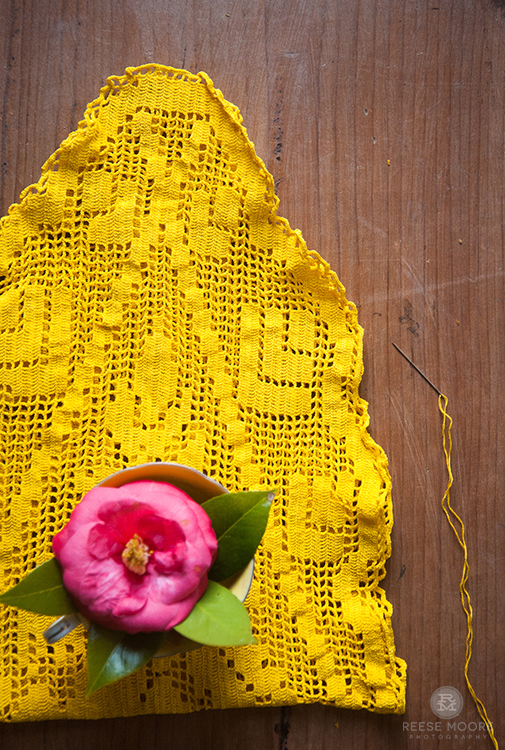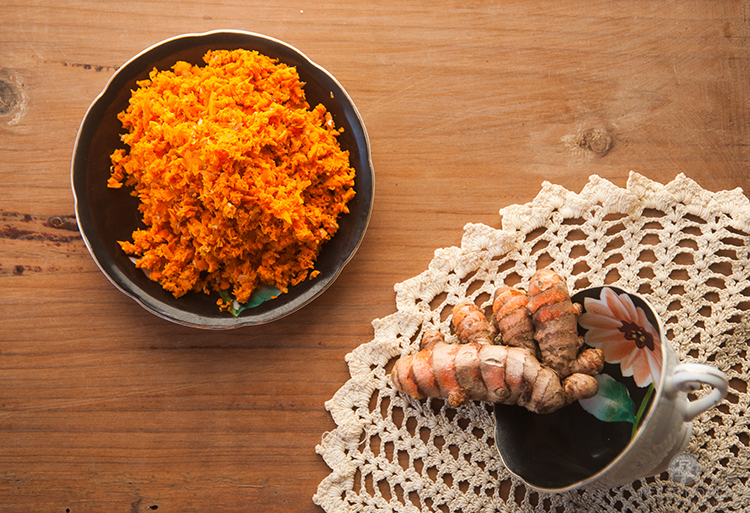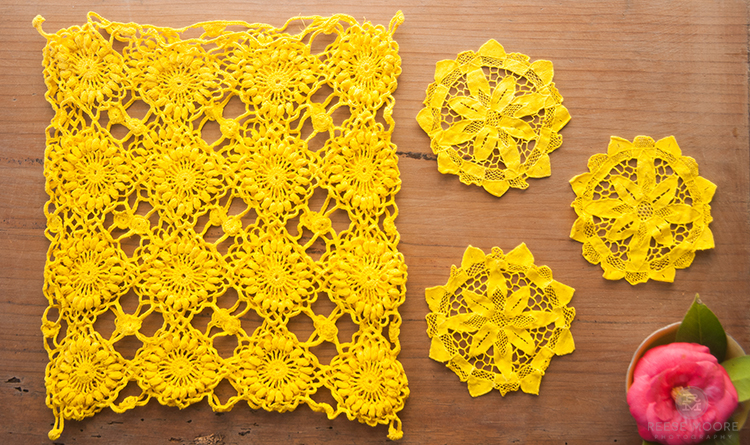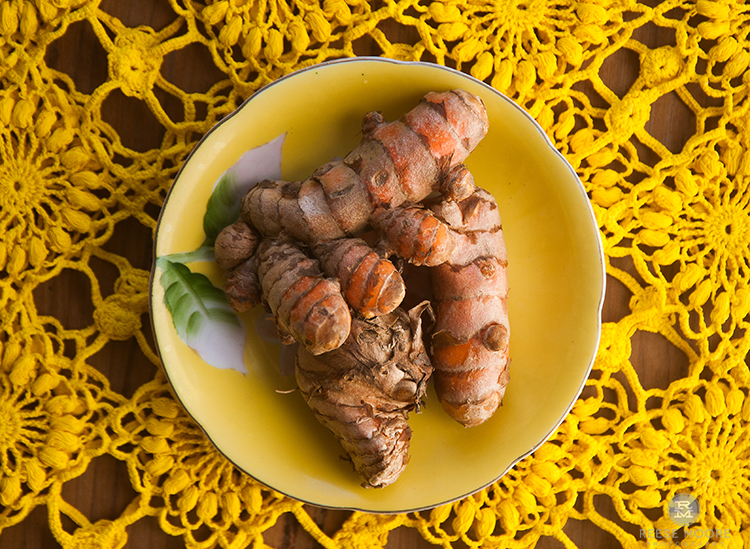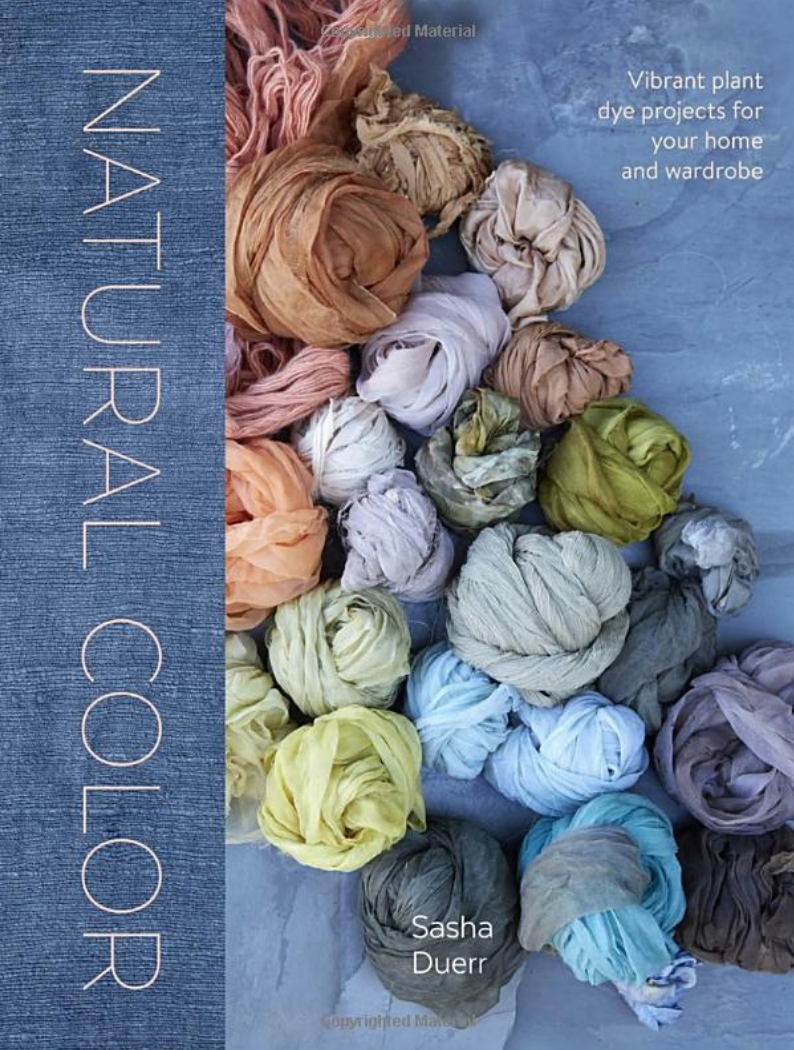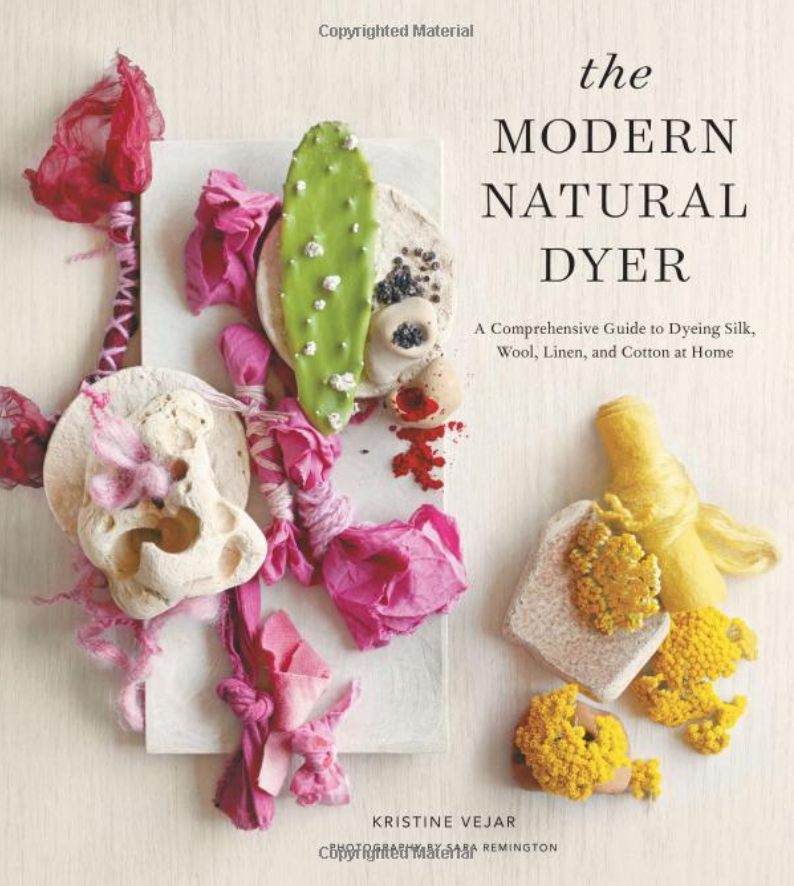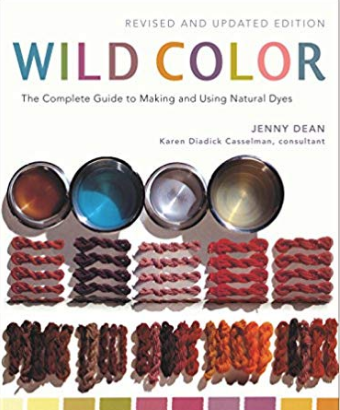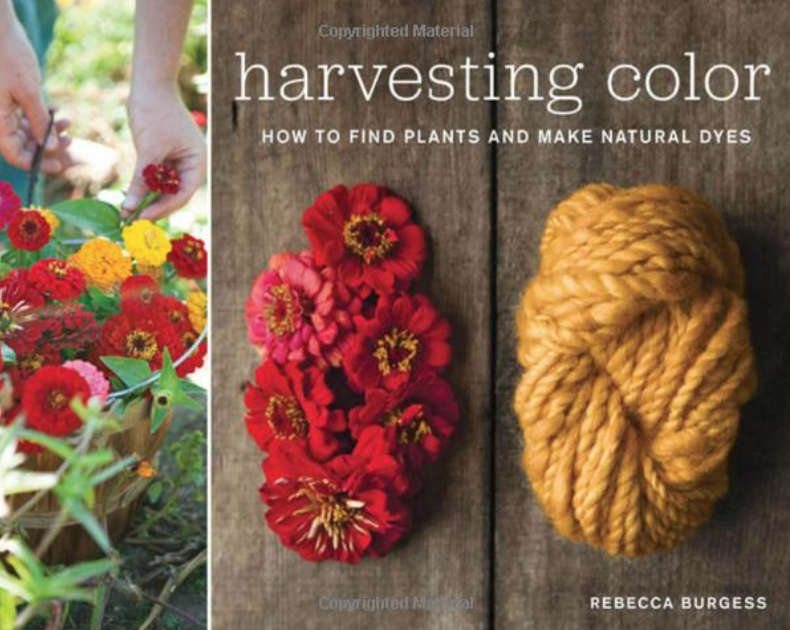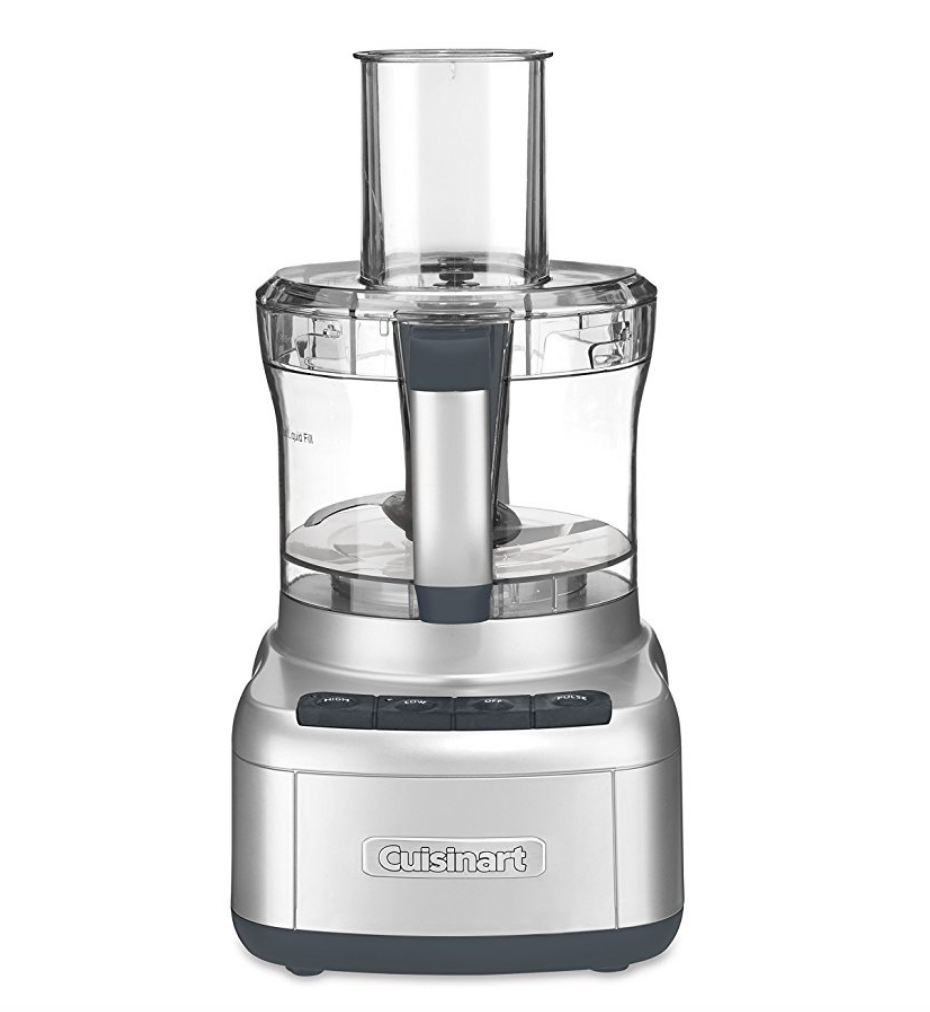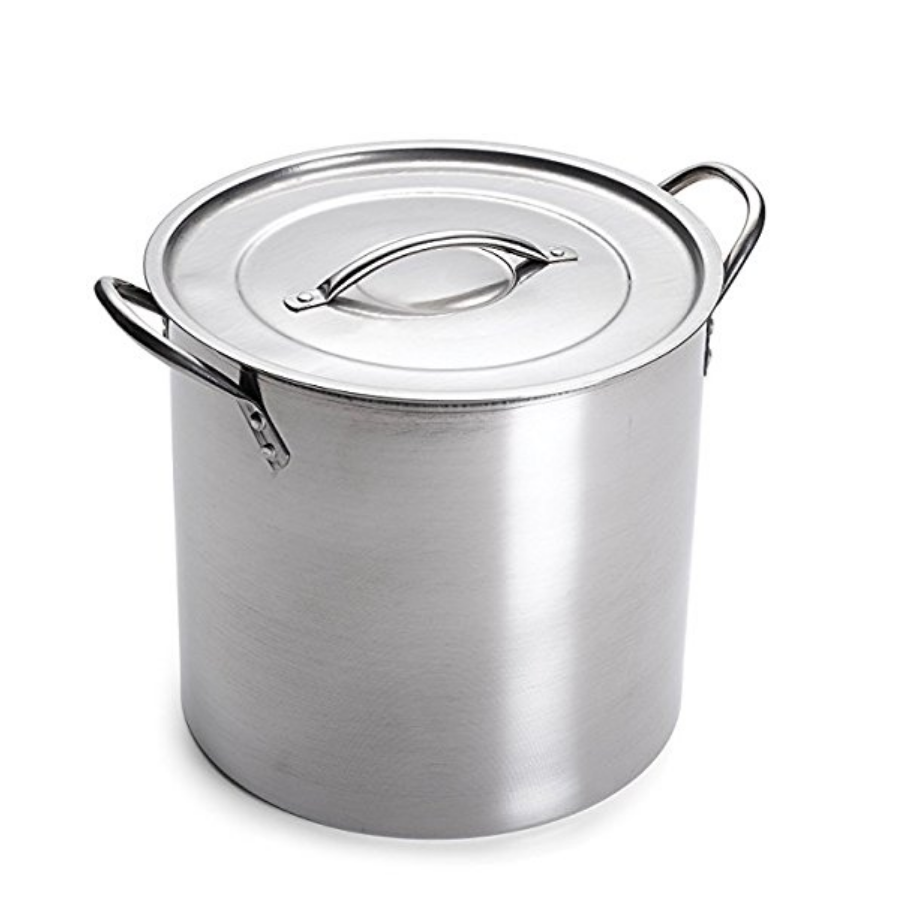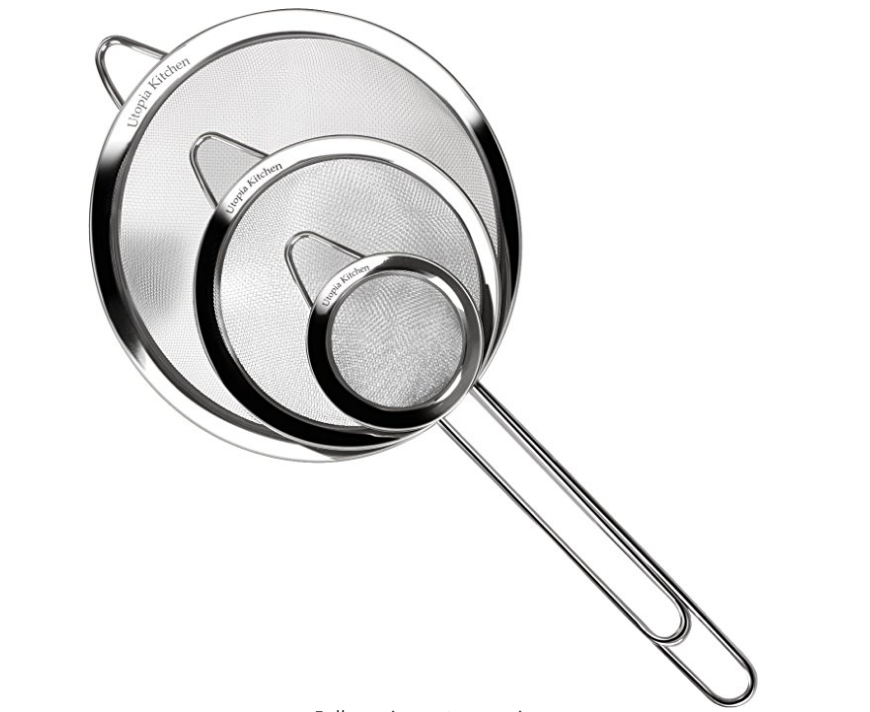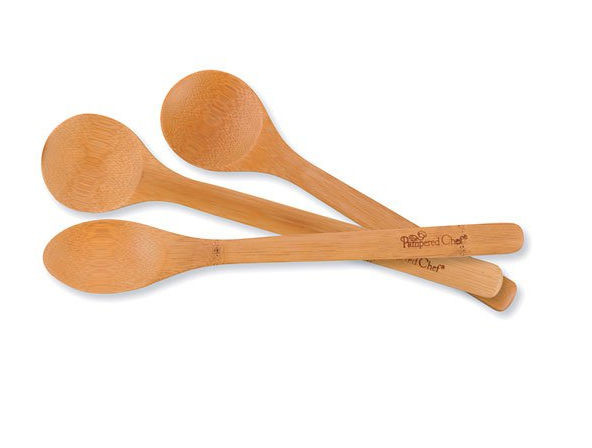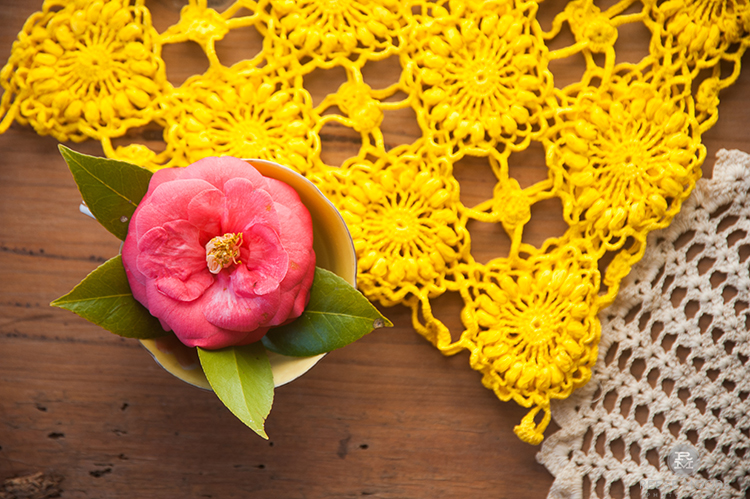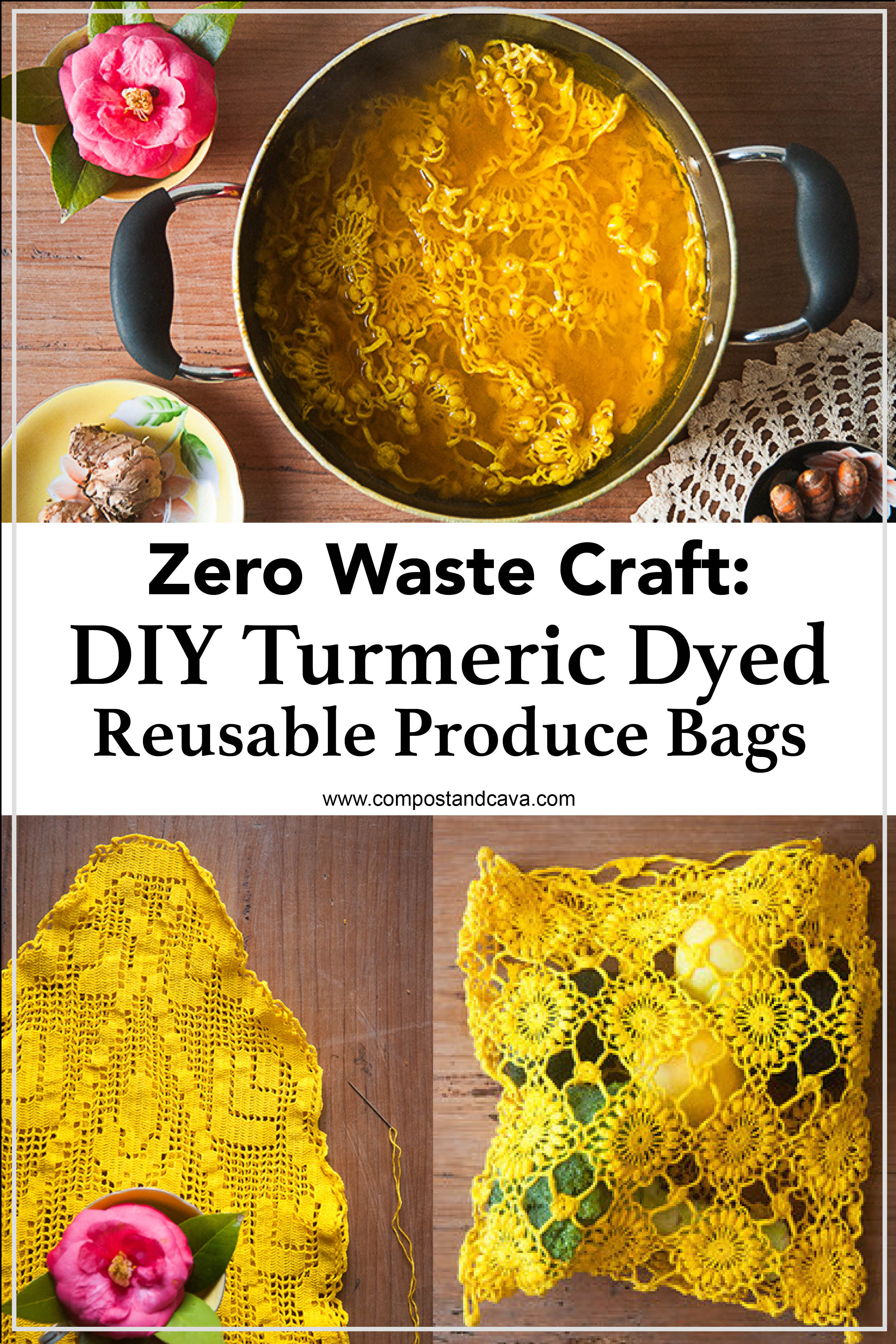DIY Turmeric Dyed Reusable Produce Bags (Zero Waste Craft)
/Remember that time I accidentally gave myself a turmeric fake tan making Alicia's cauliflower bake?
Who knew this awkward snafu would prove the inspiration for an especially colorful DIY a couple months later!
Here's the situation: I was having some blogger friends over for a wine tasting (more on that later) and wanted to put together something cute and sustainable as a thank you gift. I decided to make reusable produce bags to go with my reusable grocery bags, as I recently horrified my grocer by stuffing loose vegetables straight into my purse to keep them from being squished in my larger grocery bag. I hate to say it, but sometimes it's nice to keep your green beans in one spot in the grocery bag instead of tumbling around and making a mess.
My addiction to raiding vintage stores is at an all-time fever pitch (I blame June over at Slip into Savor for enabling me), so I was thrilled to stumble on a gorgeous heap of reasonably priced, crocheted doilies and placemats at Roumillat's Antiques.
I gleefully burst through the door to show my boyfriend the latest additions to my never-ending stream of craft clutter, and his response, "Why are they all brown and yellowed? They look dirty."
Dear reader, I was quite huffy. These are beautiful vintage pieces! They've already lived a lifetime. Their character is in their color! But if it bothered my boyfriend, I was concerned my friends would think the same.
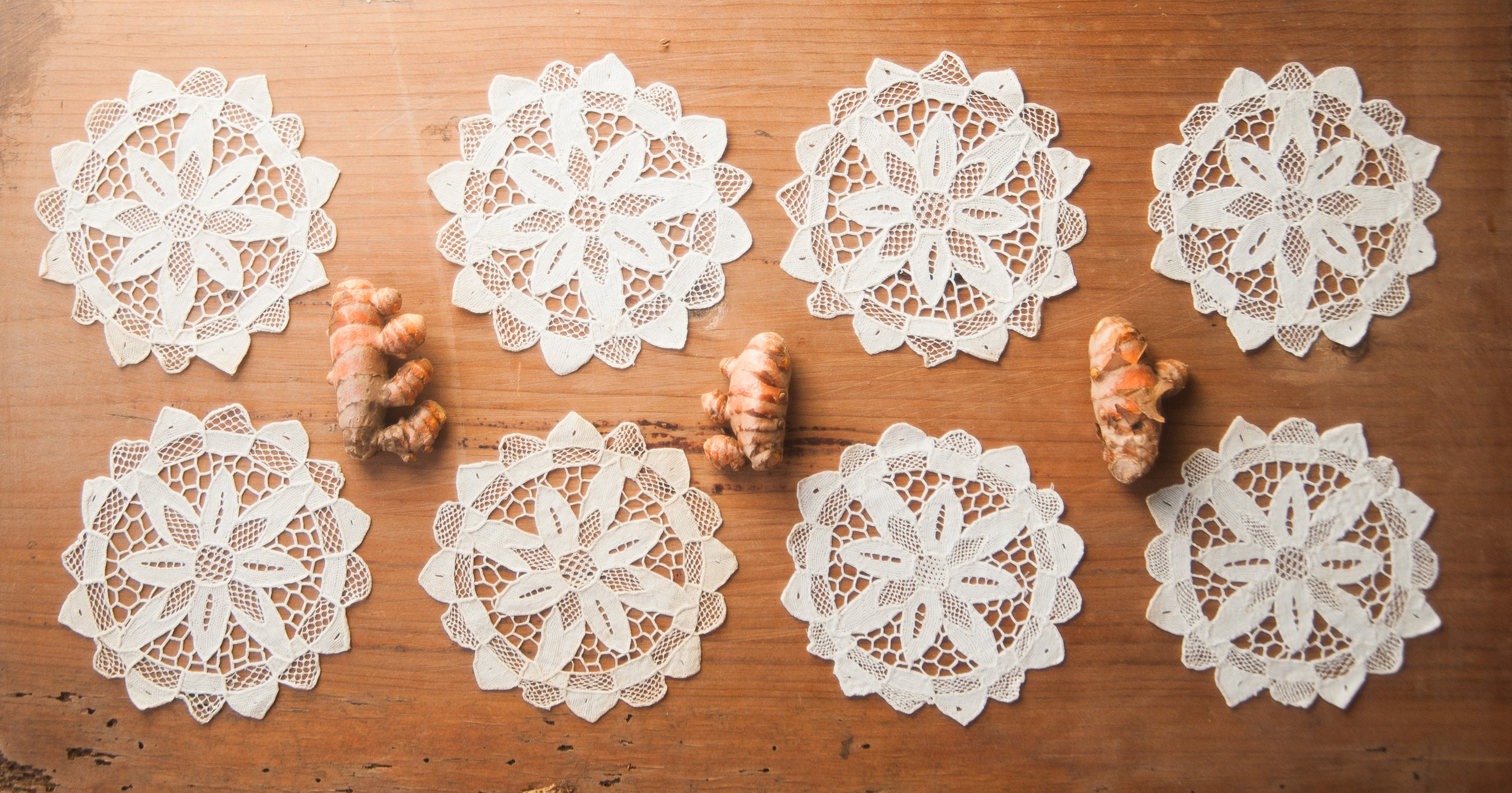
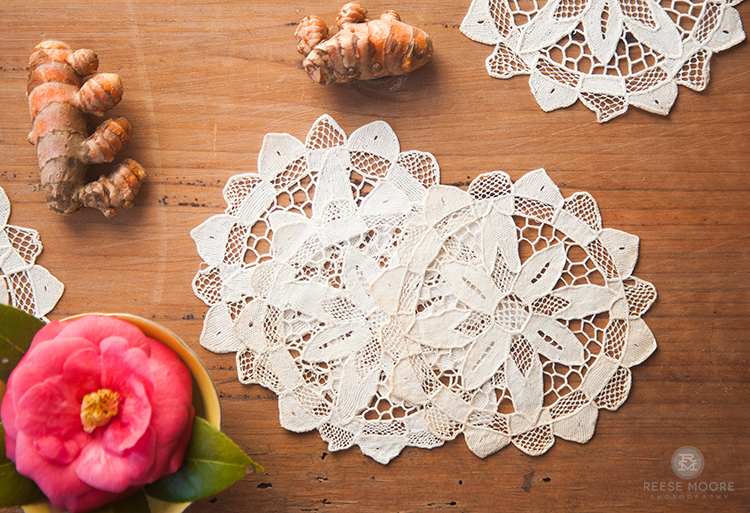
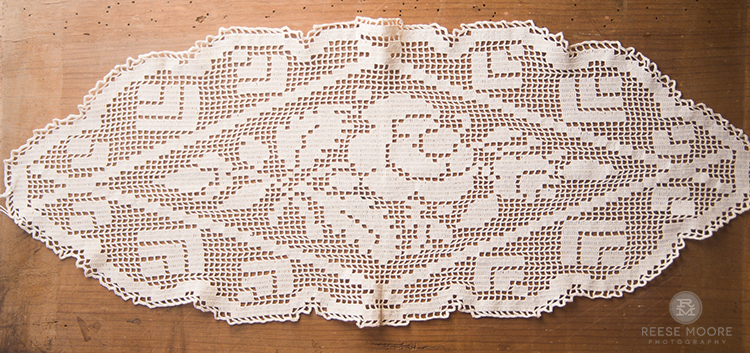

You can't wash age stains out of vintage linens and fabric dyes can be incredibly toxic and terrible for the environment, so what was I going to do? I was wracking my brain for a solution when I found myself staring down at my cutting board... still stained a vibrant gold from that turmeric recipe I mentioned earlier.
AH-HAH! Surely I could use locally grown turmeric from Spade and Clover to make a natural, eco-friendly fabric dye, right? A quick search of the Internet confirmed it, so I scurried off to the Lowcountry Street Grocery for some of those crazy, brightly pigmented knobs.
After some digging, I decided to adapt Remodelista's exceptional blog post on making a DIY turmeric dye, adapting it for fresh ingredients versus dried. I highly recommend bopping over to the post above for awesome detail on making a larger batch of dye, using dried ingredients, and how to make cool patterns in your fabric while dying. It's a really exceptional post, especially for those not working with doilies.
How to Dye Doilies Using Fresh Turmeric
I used:
2 large pieces turmeric root (enough for one large pot of fabric)
water
2 cups white vinegar
vintage doilies or vintage linens (these are more likely to be cotton or organic material, which is important)
food processor
2 large pots
*This gallery contains affiliate links. This means that if you click through and give the product a whirl, I get a tiny fee for spreading the news at no extra cost to you. This helps me offset the enormous amount of time that goes into Compost & Cava.
Wash doilies or vintage fabric before dying. I did not let mine dry between washing and drying, though I've been told it may even improve the process of taking the dye.
Wash and scrub 2 large pieces turmeric, but do not bother peeling. Place in food processor, grind into fine pieces. Transfer pot, WASH FOOD PROCESSOR IMMEDIATELY. Turmeric makes an excellent dye, so logic follows that it is also excellent at dying any and everything it has prolonged contact with. Handle with care.
Combine vinegar and water in one pot in a 1:4 ratio. Add vintage linens, they should be completely submerged in order to take the dye. Add 8-10 cups water to turmeric shavings (should be about 1 cup). Bring both pots to boil, then let reduce to a simmer for 1 hour. Dye should reduce and color should become concentrated.
Remove doilies from vinegar mixture, add to pot with turmeric dye. Make sure all pieces of fabric are submerged. I weighted mine with empty glass votive holders, as it was a tight fit in my pasta pot. Simmer over medium low heat until desired pigment is reached, keeping in mind fabric will fade some with first rinse and wash. I left these for about an hour and a half.
Rinse under cold water until excess dye is removed, take care to pick lingering pieces of turmeric from fabric to avoid patchy coloring.
LINE DRY FLAT. It's very important to carefully lay the dyed items out flat and allow to dry thoroughly. Remember to hand wash or wash separately as needed.
I'm totally smitten with the color! I want to dye everything I own this happy, sunshiney yellow. Every time I look at these bright little doilies, I can't help but smile. Mine also barely faded with their first rinse, but each fabric took the dye differently as well.
You can totally stop here if this is as far as you'd like to take our DIY journey, but I love the idea of reinventing something old and vintage as something new and stylish. Each time you take yourself out of the supply and demand system and repurpose something already in existence, it's a solid win.
How to Make Reusable Produce Bags from Vintage Place Mats
Iron linen or doilies as flat as possible.
Inspect for weak spots in stitching, reinforce with fine thread as needed.
Fold linen in half, pin along edges to become side seams. (Alternately, if using doilies, lay out to form two panels for front and back of bag, then hand sew together.)
I started at the bottom corners of the fold, respectively, and did a running stitch up the sides, leaving top quarter to create fold-over closure to prevent wayward garlic from tumbling around in your car.
If desired, fold over one flap add button. Fold other flap over to match, then add loop of thread to form closure.
Fill adorable new bag with loose veggies like mushrooms, fruit, or green beans, and enjoy!
Note: Don't sweat the small stuff on this project. Messed up the vinegar ratio? Don't worry about it. Turmeric will prevail. Linens aren't perfectly symmetrical? Probably because they were handmade, and that makes them even more special. Not an adept sewer? No worries. I promise no one is going to inspect your stitching.
I'm so proud of this little project. I love that it uses discarded, damaged linens and reinvents them in a way that is 100% natural, zero-waste, and non-toxic. I love that it will help ease everyone's transition away from disposable plastic bags at the store.
But honestly, most of all I love that every time I pull one of these out, it just makes me smile. There's something to that brilliant yellow that can't help but brighten your day, and I can't wait to try it out on more items!
